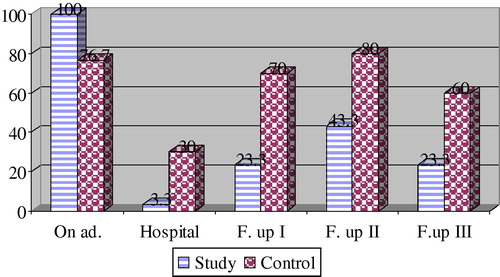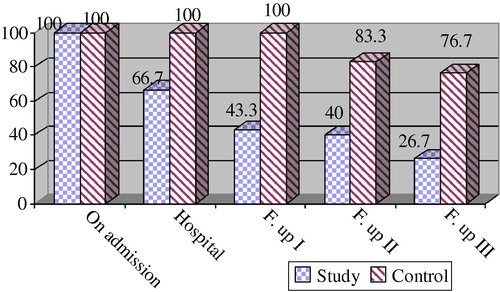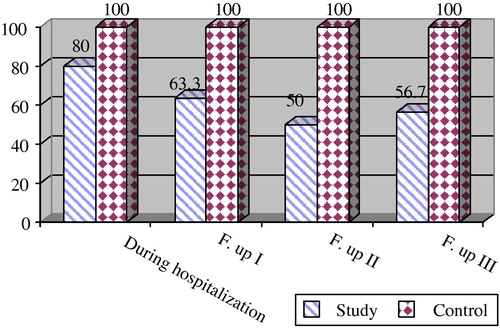Figures & data
Table 1 Frequency distribution of the two studied groups as regards socio-demographic characteristics (n = 30 in each group) expressed as number of patients in each group.
Table 2 Comparison between the two studied groups as regards anthropometric measurements throughout the assessment periods (n = 30 in each group).
Table 3 Comparison between the two studied groups as regards laboratory investigations (n = 30 in each group).
Table 4 Comparison between the studied groups as regards dumping syndrome symptoms (n = 30 in each group) expressed as number of patients in each group.
Table 5 Timing of dumping syndrome symptoms among the two studied groups (n = 30 in each group) expressed as number of patients in each group.
Table 6 Comparison between the study and control group subjects as regards wound assessment, on the fifth post-operative day and before discharge (n = 30 in each group).


